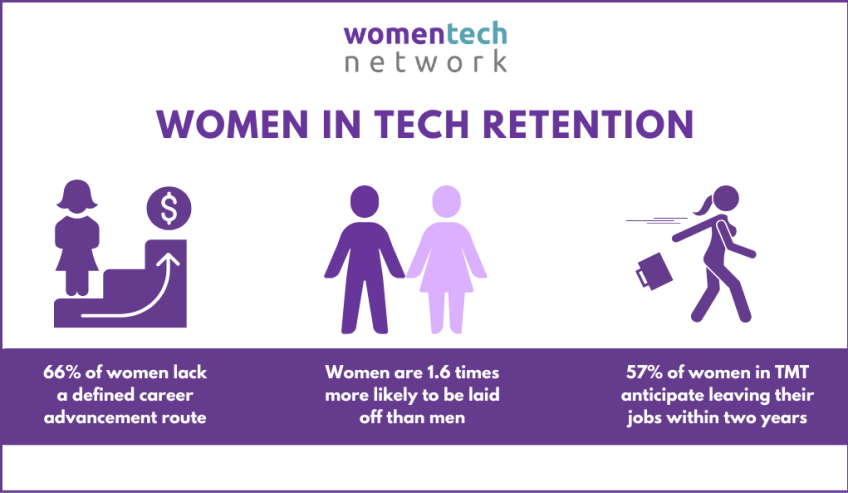Table of Contents
- Introduction to diversity in the tech industry
- Trend #1: Increased of women in tech
- Trend #2: Embracing neurodiversity in the workplace
- Trend #3: Companies prioritizing diversity and inclusion initiatives
- Trend #4: Push for more diverse leadership roles
- Trend #5: Focus on equal pay and closing the gender pay gap
- Benefits of diversity in the tech industry
- Tips for companies to promote diversity
- FAQs
Introduction to diversity in the tech industry
The tech world’s narrative is multidimensional and full of stories.
It has not always been so, though. First came the ‘big booty tech nerd’ era, an empowering movement that altogether negatively emphasizes the technological ‘toxic norms.
‘ Let us look at the five motivating trends discussed in this blog post that fight this narrative and the other inclusivity factors dispersed throughout the digital sphere.
As we sift through these trends, it is evident that the foci are shifting – from simply coders or innovators to the entire ecosystem that enables such people.
The outlook for the future is somewhat optimistic since organizations are slowly waking up to the fact that their success lies in diversity.
Culture is vital. Thus, what is famous and perhaps even more pivotal for the tech industry – why is it important to advocate for variety and differences now?
Trend #1: Increased of women in tech

As the world advances in technology, various industries have been trying to recruit women to introduce a new viewpoint to the company.
It’s not simply hiring women; it’s about redefining the stereotypes, the look and feel, and the context attached to being a ‘tech nerd.’
Every year, more and more initiatives to inspire girls to join STEM actively take various forms.
Coding Bootcamps, workshops, groups, and other mentorship programs began popping up in multiple places.
They help make girls more technologically competent.
Incorporating multiple voices and soliciting input from women often helps teams discover and develop compelling products and services that attract a larger audience.
As more women join the workforce, the importance of engineers and other role models within the field heightens.
The image of the “big booty tech nerd” is crumbling as women also come here and validate:
Intelligent, creative, resilient—everything it takes to stand in the modern industry world.
Trend #2: Embracing neurodiversity in the workplace

Neurodiversity is becoming commonplace in tech workspaces.
It demonstrates a more reasonable view that different cognitive angles can inspire creativity and invention.
Now, companies are changing their recruitment policies to retain neurodivergent persons, such as people living with autism, ADHD, dyslexia, and other types of brain patterns.
They possess different thinking and problem-solving skills that standard methods can neglect.
Therefore, inclusive environments should be created for this trend to prosper.
Workplaces need to be flexible; noise-free places or flexible work hours can increase productivity among neurodiverse people.
Training programs assist employees in applying more excellent knowledge about neurodiversity.
Empowerment leads to understanding and collaboration in teams.
The change in the tech landscape aims to foster acceptance and appreciation of differences, unlocking new ideas and solutions for every industry stakeholder.
Trend #3: Companies prioritizing diversity and inclusion initiatives
The shift represents more than just tick-box exercises.
Organizations are no longer passive but actively recruiting diverse talent sources, expanding the innovation sphere.
Diversity training has become the norm.
Such programs inform employees about unintentional biases they may have and encourage inclusive conduct.
It’s not merely a numbers game anymore; it’s about providing an atmosphere in which everyone is important.
In addition, companies are setting up mentoring programs explicitly aimed at underrepresented groups.
This supports development and opens opportunities that may have been out of reach.
Many organizations realize that being open is essential, thanks to social media movements.
Publishing diversity data on social media makes them responsible and demonstrates positive changes almost instantly.
As companies implement these priorities, they build rich cultures that appeal to the best talents from the available regions.
The game is changing—differences should not be shunned; they should be embraced to allow for the advancement of technology.
Trend #4: Push for more diverse leadership roles
In the tech industry, there is an increasing need to embrace leadership diversity and representation.
Companies are increasingly acknowledging the importance of having top management with different backgrounds.
A variety of perspectives correlates with a plethora of innovative solutions.
Organizations are implementing policies to promote the representation of marginalized groups in upper management positions.
Mentorship and focused training programs enhance the skills of future leaders from diverse demographics.
This additional push is not only for the sake of justice; it is a worthy investment. Diversity in teams enhances their efforts to make decisions.
It boosts their creative ability, stimulating growth. New ideas become mainstream as more ‘big booty tech nerds’ emerge.
Diversity is also worth investment because it fosters a robust and influential company culture.
Employees see opportunities to grow within the organization, which motivates and engages them.
When people feel valued in an organization, it is clear that they will give nothing but their best.
However, being in a diverse leadership style is more than changing companies. It is about changing the entire tech industry at all levels.
The new wave of change brings leaders that other leaders never had, thus encouraging and inspiring them to remain fearless.
Trend #5: Focus on equal pay and closing the gender pay gap
The discussion of equal pay in the tech industry is becoming more relevant. More companies are admitting that gender cannot determine the salary.
Companies are currently examining their pay frameworks, locating inconsistencies, and tackling them; several have promised transparency about their payment policies.
It is not only about justice but also about common sense. Better teams perform better, and equal remuneration encourages people of all backgrounds to work for the company.
Women, with an emphasis on women of color, often face the most challenges when it comes to salary negotiation.
Gender pay gap reduction should be the focus of such firms to achieve an atmosphere where every person feels equal in the workplace as any contributor towards the company’s benefits.
Further, public sentiment also forces accountability.
Businesses that focus on competitive pay rates begin to gain a more substantial market presence and bond with current employees who value the company‘s strategic goals of inclusion and equality in the corporate culture.
Benefits of diversity in the tech industry
People of diverse orientations enrich the tech ecosystem.
Forming great partnerships with individuals from different backgrounds and creating appealing solutions for wider audiences is easy.
Different perspectives lead to greater levels of ideals and creativity.
With diverse team members, most problems may be approached from various angles, thus increasing the chances of success.
In addition, diverse teams are said to perform better regarding financial returns.
Embracing diversity in the workplace increases employment output and corporate profits.
A diverse workforce also enhances talent attraction.
Today’s professionals are looking for opportunities where their identity differences will be appreciated.
An inclusive culture also positively impacts employee engagement and turnover in the organization.
An all-inclusive approach makes teams feel that every person’s opinion matters, which increases job satisfaction.
Tips for companies to promote diversity
Diverse representation in the tech sector is not only a hot topic; it’s a core necessity of effective functioning and the kernel of innovation.
Organizations can take many constructive measures to ensure an inclusive culture.
The Company’s policy should establish its diversity targets and additional valuable benchmarks.
Set goals to demonstrate to the public that minority representation is present in your strategy.
Inform all employees about these targets, and as a result, everyone will be held responsible within the company.
Another step is to offer training that addresses diversity and inclusion issues as part of new employee orientation.
Workshops must address unconscious bias, cultural competence, and communication strategies.
This contributes to cultivating a workforce that appreciates different viewpoints.
Then, mentoring programs targeting underrepresented individuals should be promoted alongside experienced personnel already working in the tech industry.
These individuals can help and provide support, making these employees feel connected to the workplace.
Finally, it puts particular emphasis on hiring practices.
Where applicable, advocate for blind recruitment methods—such approaches should help reduce concerns about candidate bias.
Broaden your search for talent by identifying and targeting HBCUs or organizations promoting historically marginalized communities.
Encourage the communication of issues such as diversity in the context of your business’s culture.
Provide channels that enable employees to voice their experiences and ideas on improving inclusivity.
Implementing these tips will improve workplace culture and ensure better results for organizations wishing to stay competitive in today’s dynamic business environment.
FAQs
What is the “big booty tech nerd” movement?
The “big booty tech nerd” movement challenges stereotypes in tech, promoting diversity and inclusivity.
How does the “big booty tech nerd” concept impact women in tech?
This allows women to change the narrative about women in tech, encouraging more women to pursue careers in STEM.
On this very note, why does ‘neurodiversity’ matter to the ‘big booty tech nerd’ group?
Embracing neurodiversity enriches creativity and innovation, aligning with the “big booty tech nerd” ethos.
How are companies addressing the “big booty tech nerd” stereotype?
Companies prioritize diversity initiatives to challenge traditional tech norms associated with the “big booty tech nerd” image.
